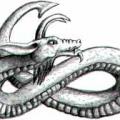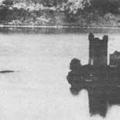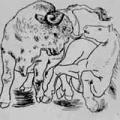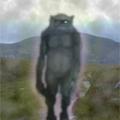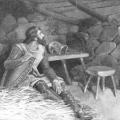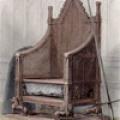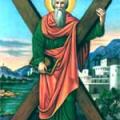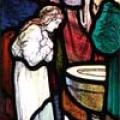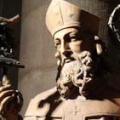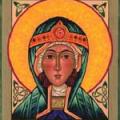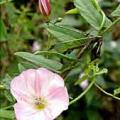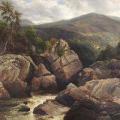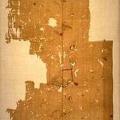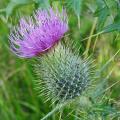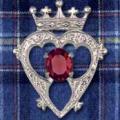Categories
Most Liked
Posted on July 17, 2013
by Amanda Moffet
by Amanda Moffet
Posted on May 12, 2013
by Chas Mac Donald
by Chas Mac Donald
Posted on August 29, 2013
by Amanda Moffet
by Amanda Moffet
Posted on February 7, 2013 by Donald | 5 views | comments
Never mind Nessie, the scariest creature ever to roam Scotland was the infamous Linton Worm.
A 'Worm' was another term used for a dragon (orme or worme is the ancient Norse for serpent), and the Linton worm lived in a hollow on the Northeast side of Linton Hill. This area is still known as 'Worm'...
Posted on February 7, 2013 by Donald | 3 views | comments
Returning to Iona from his mission to Christianise the Picts, Saint Columba approached one of the crossing points of the River Ness. There was a small settlement here, and a group of people were digging a grave for a newly dead man. When Columba asked how the man had died he was told he had been kil...
Posted on February 7, 2013 by Donald | 13 views | 1 comments
Almost every Scottish loch has a monster, or at least stories about a monster. Perhaps they are just convenient tales told by grannies to stop local children playing too near the water? The most common monster in these watery warnings is the kelpie, the waterhorse.
The kelpie was a creature that li...
Posted on February 7, 2013 by Donald | 4 views | comments
The year was 1890 and John Norman Collie, a respected scientist and explorer was walking in the Cairngorms. This area now popular with tourists, mountaineers and skiers was an even more desolate and unexplored spot back then. As he approached the summit of Ben MacDhui, The highest peak in this ran...
Posted on February 7, 2013 by Donald | 4 views | comments
“As we were sailing down the loch in my boat we were suddenly disturbed and frightened by a thing that surfaced behind us. We watched it catch us up then bump into the side of the boat, the impact sent a kettle of water I was heating onto the floor. I ran into the cabin to turn the gas off as the ...
Posted on February 7, 2013 by Donald | 2 views | comments
From a time that predates the great Scottish King Robert the Bruce or even the exploits of Scottish Hero William Wallace there lived a great king of Scotland, Alexander III. A ruler who reigned over a great time of peace and prosperity in Scotland but who's tragic death plunged the country into a gr...
Posted on February 7, 2013 by Donald | 4 views | comments
Robert Bruce, Earl of Carrick, was descended from a Norman knight, Robert de Bruce, who came to England with William the Conqueror. His grandfather had been one of the 13 claimants to the Scottish throne in 1291, during the reign of the English king Edward I. Edward had chosen John de Balliol, an ...
Posted on February 7, 2013 by Donald | 3 views | comments
Living in Edinburgh you are always aware that wherever you go you are trekking over centuries of history, that you can’t walk anywhere without walking on ancient bones. However in our little office in Leith we were completely unaware of the history right under our feet.
King James V died in 1542 ...
Posted on February 7, 2013 by Donald | 4 views | comments
I'm sure most of our readers have either read Dan Brown's book 'The Davinci Code' or at least watched the film of the same name. The connection with Scotland is seen as the story reaches it's climax in the enigmatic Roslyn Chapel. The tale of intrigue surrounding an ancient biblical artefact is a ...
Posted on February 6, 2013 by Donald | 6 views | comments
On the 30th of November St Andrews day is celebrated across Scotland and indeed around the world. So how did this most eligable of all saints come to be Scotland's patron saint?
Saint Andrew was one of the original Christian Apostles, he was the older brother of Saint Peter. The name 'Andres is t...
Posted on February 6, 2013 by Donald | 0 views | comments
Like many of the early Christian Saints, Æbbe was from royal blood.
Æbbe was the daughter of King Æthelfrith the Ravager of Bernicia and his third wife Acha of Deira. She was also related to St. Oswald and St. Edwin, King of Northumbria. Æthelfrith had become the first king of Northumbria when he...
Posted on February 6, 2013 by Donald | 1 views | comments
The saint most closely associated with the foundation of the city of Glasgow, St Mungo's true story must lie somewhere between fact and legend.
Mungo’s mother was Denw (or 'Tenew' in some versions), his grandfather was a Brythonic king Lleuddun also referred to as King Llew or Loth after which th...
Posted on February 6, 2013 by Donald | 1 views | comments
It could be argued that St Margaret was Scotland's greatest female character. Born into a time where Scotland was a lawless and dangerous place St Margaret was a great civilising influence on the country and her legacy exists all over Scotland today.
Margaret was born, possibly in Hungary, in 104...
Posted on February 6, 2013 by Donald | 3 views | comments
On the island of Eriskay in Scotland's Western Isles. There grows a small pink flower. Unique to the island this frail little Convolvulus flower has a link with Bonnie Prince Charlie.
Before he reached Glenfinnan to raise the Jacobite standard in 1745 the 'young pretender' first arrived at the is...
Posted on February 6, 2013 by Donald | 3 views | comments
The end of 1688 saw much discontent with the Catholic monarchy, this was brought to a head when James's wife gave birth to an heir, William of Orange was invited to intervene. When William landed in England James was compelled to flee the country. William was crowned in his place. But not everyon...
Posted on February 6, 2013 by Donald | 4 views | comments
In the years after the Jacobite uprising of 1745, the terrible reputation of the government troops or 'Redcoats' as they sought to finally put down once and for all the brave highland clans was spread throughout the North of Scotland. One story concerning a poor milkmaid and a wicked redcoat serge...
Posted on February 6, 2013 by Donald | 3 views | comments
One of the most treasured possessions of the clan MacLeod is the famous Fairy Flag of Dunvegan. The story behind the flag is one of the greatest romantic tales in all the highlands...
A great young Chief of the clan MacLeod fell in love with a fairy princess, a bean sidhe, one of the Shining Folk...
Posted on February 6, 2013 by Donald | 27 views | 4 comments
The thistle of Scotland is said to be the oldest national flower on record, the legend of how this proud and regal plant became a national emblem goes back many hundreds of years, to the time when Scotland was being rampaged by the vicious Vikings.
From 795 Scotland was under assault by wave upon...
Posted on February 6, 2013 by Donald | 5 views | comments
The Royal Mile is a long cobbled street that runs down from Edinburgh castle to the palace of Holyrood. When Edinburgh castle was first established this was the only accessible route, the castle’s situation on the dark rocky plug of an extinct volcano made it impregnable from all but the east wher...
Posted on February 6, 2013 by Donald | 8 views | comments
Anyone who has browsed the Scotclans site can't help but notice that our logo incorporates the saltire (or at least a reversed out and colourised version of it). Take a walk through Edinburgh, Glasgow, Inverness or any other Scottish town and city and you will see countless saltire flags. They ado...
Posted on February 6, 2013 by Donald | 7 views | comments
There are many Scottish stories about selkies, but the most common is a tragic story of theft, love and loss.
Seals live close to people in many coastal and island communities in Scotland. They hunt the same fish, those big eyes and round heads look almost human in the water, and when they sing, yo...
Featured Articles
Most Discussed
Posted on July 16, 2013
by Amanda Moffet
by Amanda Moffet
Posted on February 6, 2013
by Donald
by Donald
Posted on July 17, 2013
by Amanda Moffet
by Amanda Moffet


 View More
View More View Less
View Less